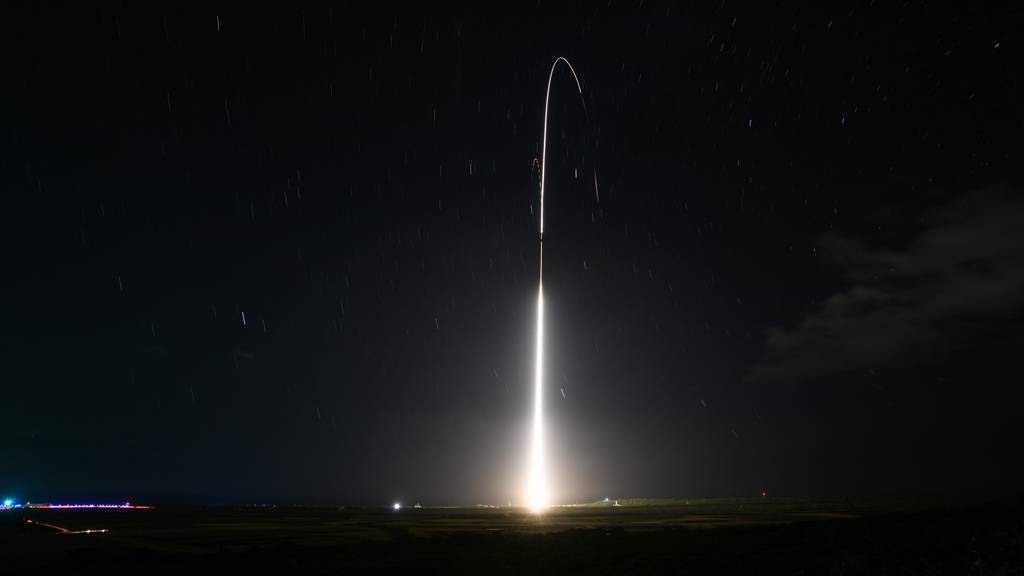Airplane said:An even better idea is giving them 1 to 2 dozen nukes.
Let's just throw the NPT out the window shall we. I wonder what the reaction would be if Russia or China started handing out nukes to countries... :
Airplane said:An even better idea is giving them 1 to 2 dozen nukes.
GTX said:Airplane said:An even better idea is giving them 1 to 2 dozen nukes.
Let's just throw the NPT out the window shall we. I wonder what the reaction would be if Russia or China started handing out nukes to countries... :
TomS said:I sometimes wonder if there isn't a confusion in these statements between making the intercept at 1000 km or being able to intercept targets whose trajectories have a max altitude of 1000 km. Very big difference there and one easily lost on copy writers, especially in translation.
sferrin said:TomS said:I sometimes wonder if there isn't a confusion in these statements between making the intercept at 1000 km or being able to intercept targets whose trajectories have a max altitude of 1000 km. Very big difference there and one easily lost on copy writers, especially in translation.
Defining a target by how high the peak of its trajectory is seems an odd way of doing it. Generally they define them by range. Consider the following:
https://www.aspistrategist.org.au/ballistic-missiles-%C2%BD-rule/
"The physics of space security: a reference manual (which can be downloaded here). In their chapter on space launches, the authors take the reader through what’s called the ‘½ rule’.
TomS said:sferrin said:TomS said:I sometimes wonder if there isn't a confusion in these statements between making the intercept at 1000 km or being able to intercept targets whose trajectories have a max altitude of 1000 km. Very big difference there and one easily lost on copy writers, especially in translation.
Defining a target by how high the peak of its trajectory is seems an odd way of doing it. Generally they define them by range. Consider the following:
https://www.aspistrategist.org.au/ballistic-missiles-%C2%BD-rule/
"The physics of space security: a reference manual (which can be downloaded here). In their chapter on space launches, the authors take the reader through what’s called the ‘½ rule’.
I'm not talking about max potential altitude but max ordinal in a normal flight. But I may have my numbers wrong -- I was thinking that a max ordinal of 1000 km would be right around the typical for IRBMs, which should be in SM-3 Block II's wheelhouse.
sferrin said:Heh. Right there at 0:24 on the first video is an F-16 with an AQM-37C high performance target.
DWG said:I think there's more to it than simply data link cueing, which is something that's a well established technology with Aegis and CEC.
DWG said:Yes, but it exercises that capability within a NATO task group.
marauder2048 said:Aren't "simulated engagements" typically non-intercept attempts?
marauder2048 said:Aren't "simulated engagements" typically non-intercept attempts?
Japan itself is the largest unsinkable aircraft carrier/air defense/strike ship although immobile of course. It should eventually be ringed with Aegis Ashore (and even IRBM CPGS systems and a few hundred F-35s to really dream).sferrin said:http://www.defense-aerospace.com/articles-view/release/3/189749/us-clears-sm_3-missile-sale-to-japan.html
"The State Department has made a determination approving a possible Foreign Military Sale to Japan of Standard Missile-3 (SM-3) Block IIA missiles for an estimated cost of $133.3 million. The Defense Security Cooperation Agency delivered the required certification notifying Congress of this possible sale today.
The Government of Japan has requested a possible sale of four (4) Standard Missile-3 (SM-3) Block IIA missiles. Also included are four (4) MK 29 missile canisters, U.S. Government and contractor representatives' technical assistance, transportation, engineering and logistics support services, and other related elements of logistical and program support. The estimated total case value is $133.3 million"
Cha-ching!
Something seems to have gone awry with the latest Raytheon Standard Missile-3 (SM-3) Block 2A intercept tests in Hawaii.
It was meant to be the final developmental test of the upsized anti-ballistic exoatmospheric interceptor, and the first from a land-based Aegis Ashore facility.
It would have also been the SM-3 Block 2A’s first shot against an intermediate-range ballistic missile target, the kind Iran and North Korea have been developing.
The Missile Defense Agency (MDA) confirms that the anticipated test, which Aviation Week previewed this week, did occur on the morning of Jan. 31, from the Pacific missile range’s Aegis Ashore test complex on Kauai, Hawaii.
A mobile, sea-based ICBM defense could massively expand the protective envelope for identifying and intercepting enemy attacks. As opposed to fixed, land-based GBIs, Navy ships could maneuver into key positions based on warnings or intelligence information. Should they operate closer to the shore, Navy ships armed with SM-3 IIAs could bring the possibility of taking out an ICBM early in its flight, perhaps just after it enters space.
sferrin said:They should test THAAD against one too. Can't park an Aegis cruiser in Dallas. (Or Nebraska, Wyoming, etc.)
The details of the target vehicle are not public. It's made by NG and has an unclassified designation, ICBM T2, but that's about all MDA will say. It may be built from refurbished Trident I and Castor stages, as presented here.What is used to simulate an ICBM target for the test?

Watchdog expresses concern over using US Navy interceptor for homeland missile defense
Can the SM-3 Block IIA interceptor be upgraded to counter evolving ICBM threats to the U.S. homeland without breaking the bank? The Government Accountability Office is unsure.www.defensenews.com
